Life-course processes
as cause and effect
of macro-level changes
in gun violence
| Charles C. Lanfear | University of Cambridge |
| Robert J. Sampson | Harvard University |
Homicide in the US
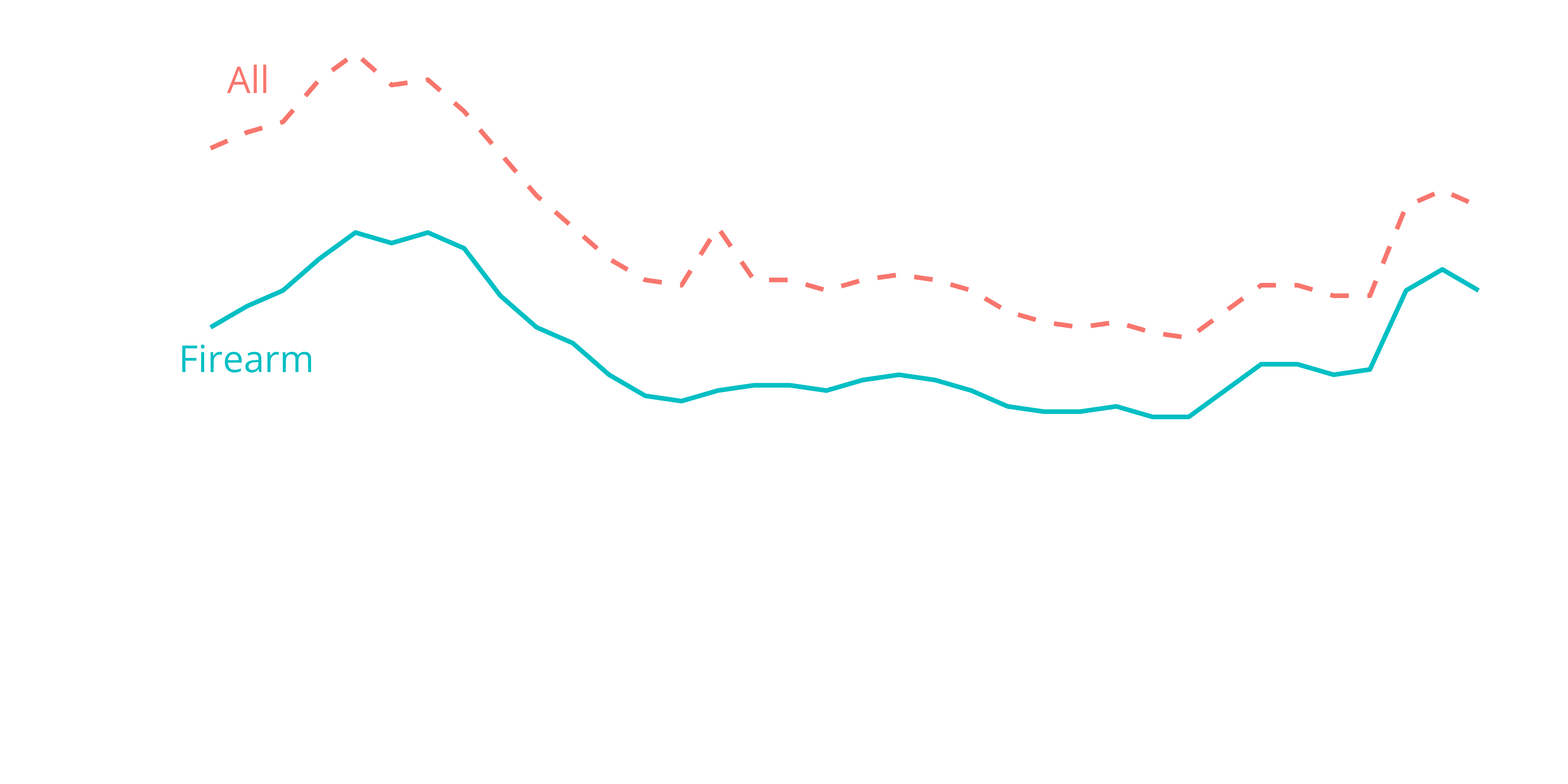
Peaked in 1990s and 2020-2021 and increasingly involves guns
Homicide in Chicago
Exaggerated in cities like Chicago, Philadelphia, Dallas
Questions
How have these changes in gun violence translated into personal exposure to gun violence?
How are these changes related to individuals’ gun behaviors?
How are gun behaviors driving these changes in violence?

- Adolescent exposure high in early 1990s, low afterward
- Adult exposure low until 2016-2021
- Black and Hispanic males at highest risk
Question: What drove these large swings in violence and exposure?
- One key proximal cause: gun carrying

Adolescent-onset
- \(\frac{1}{3}\) of those ever carrying
- Most age out
- Associated with immediate dangerous contexts
Adult-onset
- \(\frac{2}{3}\) of those ever carrying
- Most still carrying today
- Associated with insecurity and diffuse threats
How does this relate to macro-level changes in gun violence?
Changing age distribution of homicide
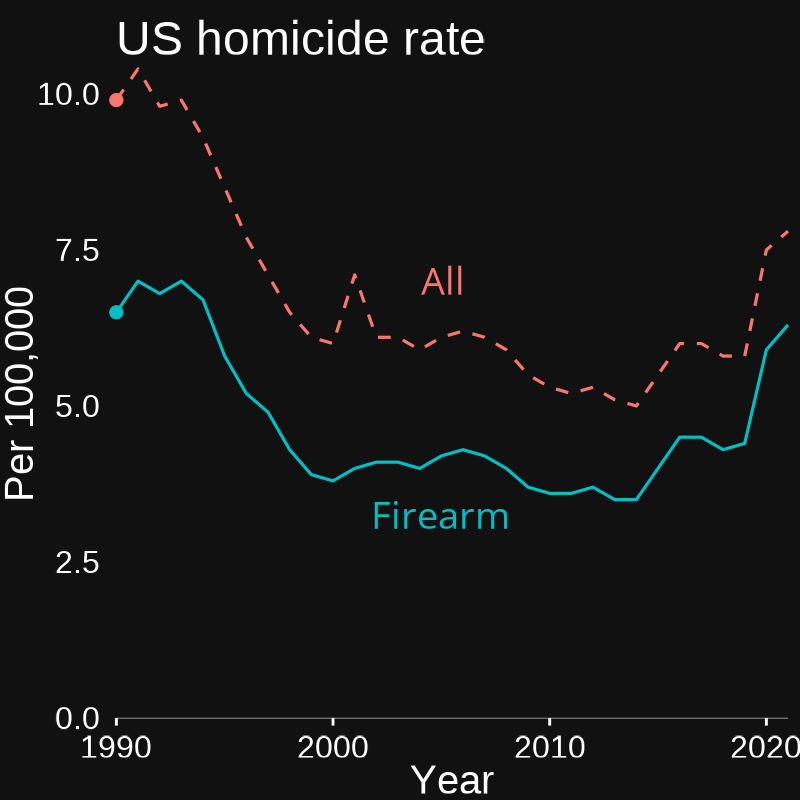
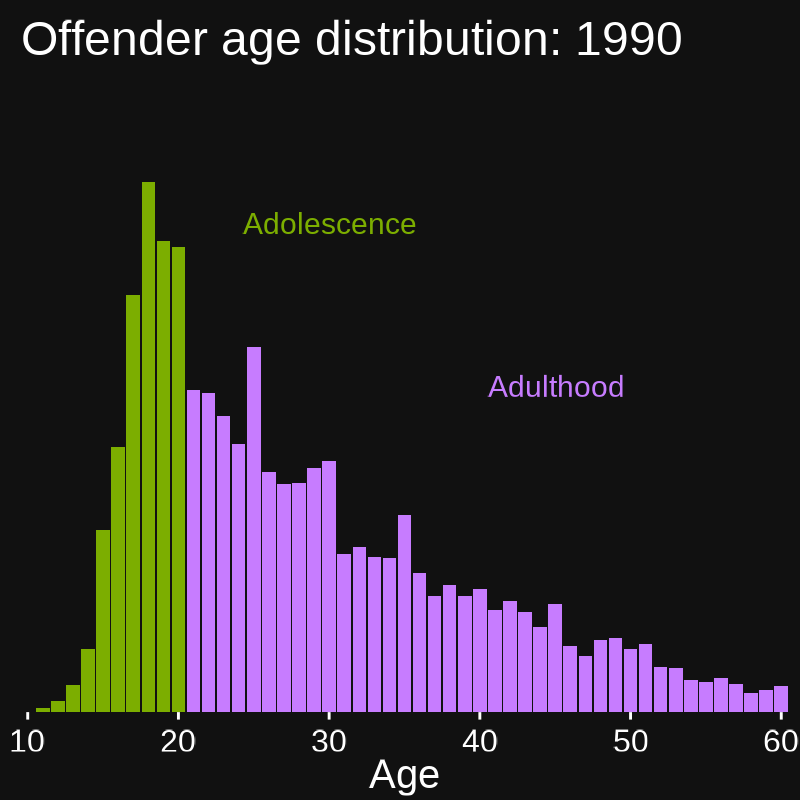
Gun homicide is increasingly committed by adults
Two similar periods of high gun violence, except…
Early 1990s
- Concentrated in adolescence
- Slow accumulation:
- Deindustrialization, mass incarceration etc.
- Context: Concentrated disadvantage, gangs, and illicit markets
2016-2021
- Concentrated in adulthood
- Rapid destabilization:
- Trump, Ferguson, COVID-19, Floyd, etc.
- Context: Widespread insecurity, loss of faith in institutions
Both: Legal cynicism and distrust
Legal cynicism, distrust,
and gun carrying
a cultural frame in which people perceive the law as illegitimate, unresponsive, and ill equipped to ensure public safety.
when calling the police is not a viable option to remedy one’s problems—individuals may instead resolve their grievances by their own means
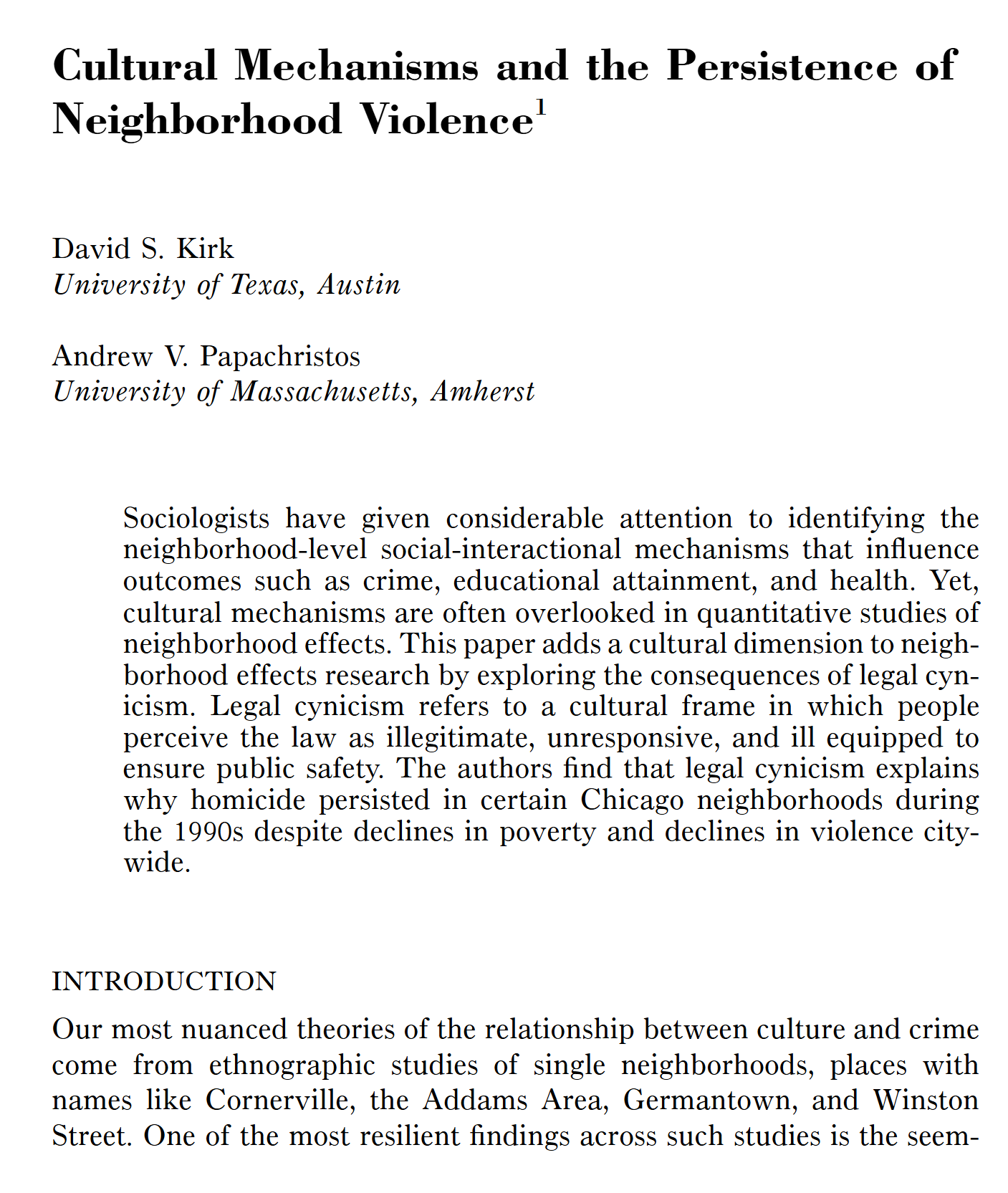
… two racially differentiated beliefs promote legal gun carrying: The belief common among most carriers that police are inadequate protectors—and thus one may carry a gun as protection from crime—and the belief more common among non-white carriers that police are coercive violators of rights—and thus one may carry a gun as protection from and resistance to the oppressive state (Lanfear et al. 2024)
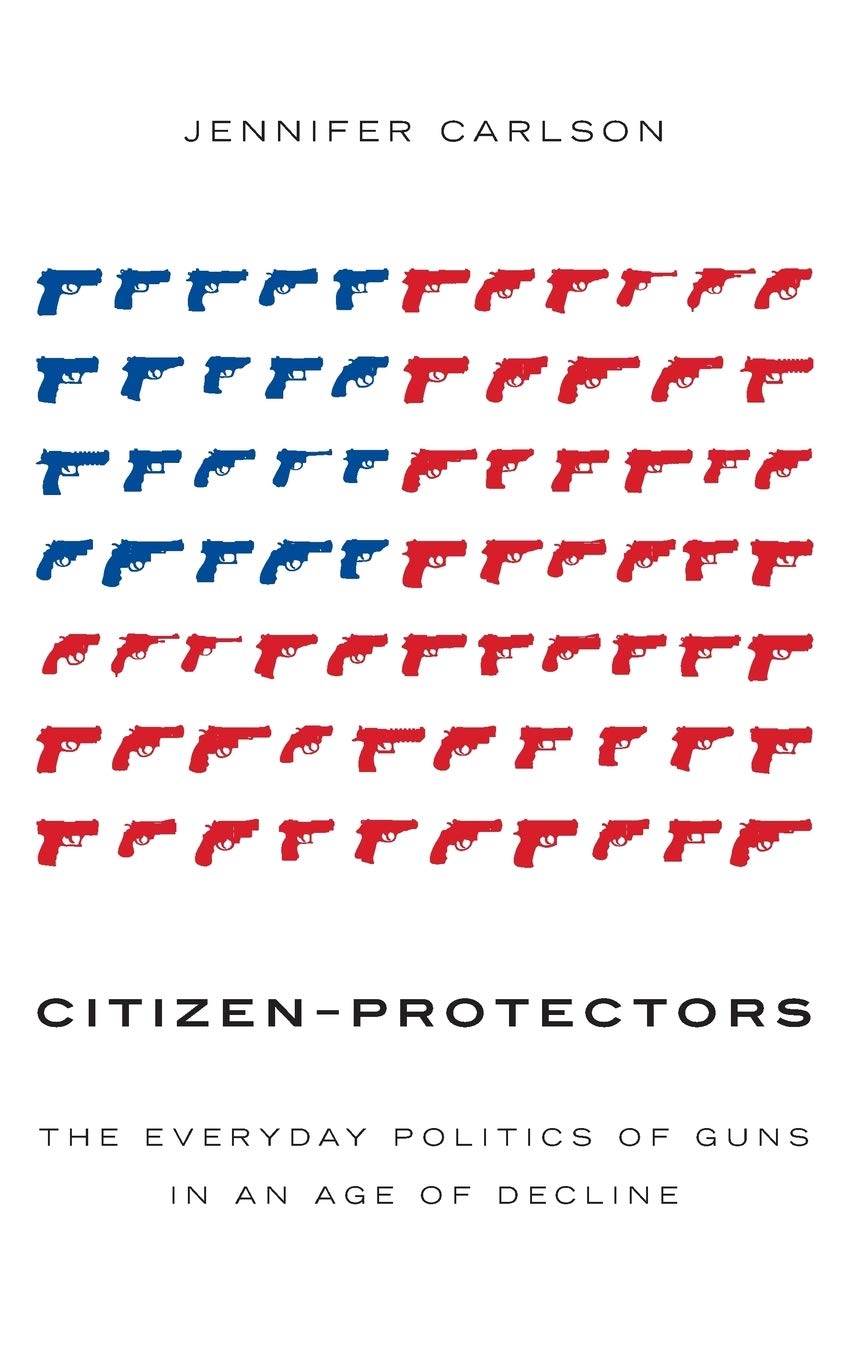
Linked to diffuse social and economic insecurities
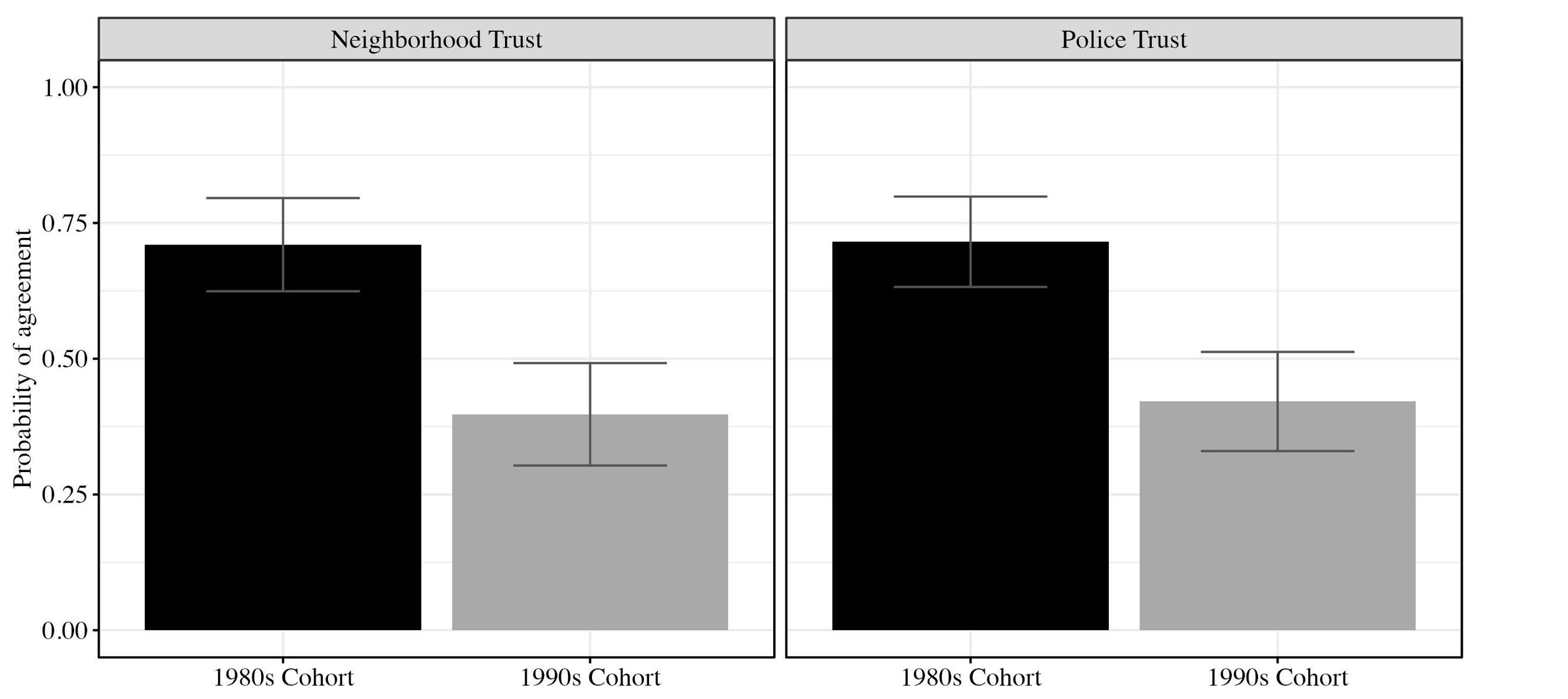
Despite having much higher arrest rates, the cohort born in 1987 has greater levels of trust in police and neighbors at age twenty-five than counterparts born just nine years later, adjusting for background factors and early-life conditions (Sampson 2026)

Stroebe et al. (2017) find protective gun ownership is primarily driven by “the belief that the world is a dangerous and unstable place, populated by bad people, and that society is at the brink of collapse.”
Low trust… may increase the likelihood of interpreting others’ actions as intentional and offensive, a key antecedent of interpersonal conflict and homicide (Luckenbill 1977; Ludwig 2025).
Cynicism, distrust, and guns
legal cynicism promotes concealed gun carrying as a response to perceived insecurity.
legal cynicism in the 1990s was primarily a neighborhood phenomenon because the factors producing it were local to neighborhoods; in contrast… legal cynicism of the mid-2010s onward is rooted in macrosocial changes…
These changes were shaped by a structural legal context forged in distinctly American gun culture.
Legal cynicism, distrust, and violence
How does life-course variation in carrying impact rates of violence?
Dual process model of gun carrying and gun violence
2021 was not a reprise of the 1990s; both were the result of differential activation of processes responding to macrosocial context
Some expectations
1995
- Spatially concentrated
- Strong disadvantage link
- Local legal cynicism
- Younger, more similar offender/victim
- Group-oriented
- Criminal contexts
- Fewer legal guns
- Gun policy less relevant
2021
- More dispersed
- Weaker disadvantage link
- General cynicism
- Older, less similar offender/victim
- Individual-oriented
- Non-criminal contexts
- More legal guns
- Gun policy more relevant
A research agenda
Gun violence
- Changing concentrations and contexts
- Heterogeneity, carrying, and the new decline
Cynicism, trust, and the life course
- Legal cynicism and gun carrying across eras
- Formative years and consequences for legal cynicism
- Social media and unstructured socialization
A research agenda
National politics
- Declining legitimacy of institutions
- Cynicism, gun culture, and right nationalism
… we suggest that there is value, as initiated here, to continued theorizing on life-course processes as cause and effect of macro changes—not just in gun violence but crime more generally.
Feedback and questions
Contact:
Charles C. Lanfear
Institute of Criminology
University of Cambridge
cl948@cam.ac.uk
For more about the PHDCN+:
PHDCN@fas.harvard.edu
https://sites.harvard.edu/phdcn/
https://doi.org/10.1007/s40865-022-00203-0
Appendix
Not attributable to age composition

Also: Homicide nadir in 2000 but age-shift occurred in 2010
Early evidence
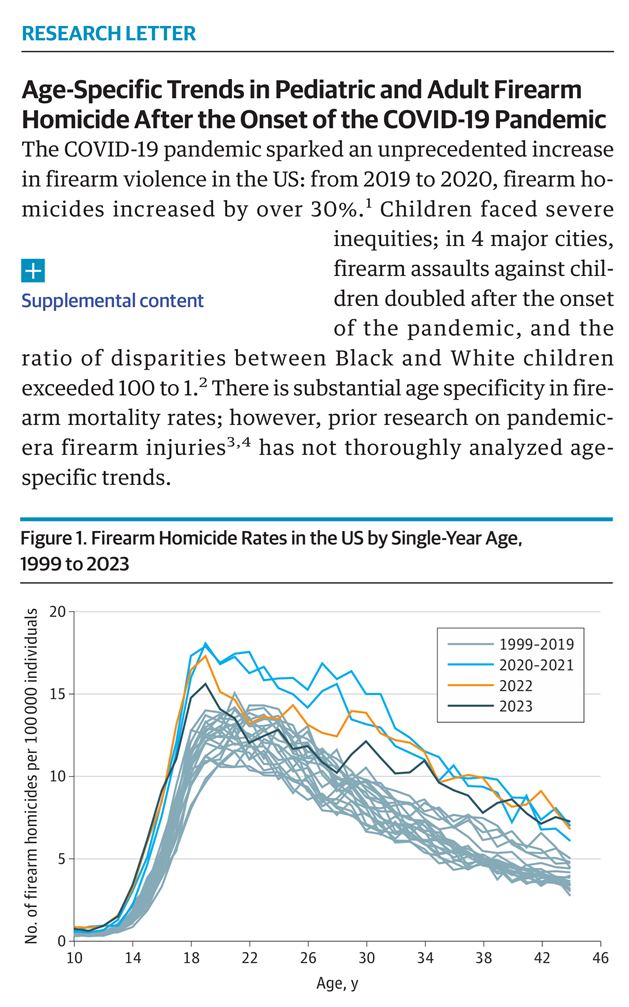
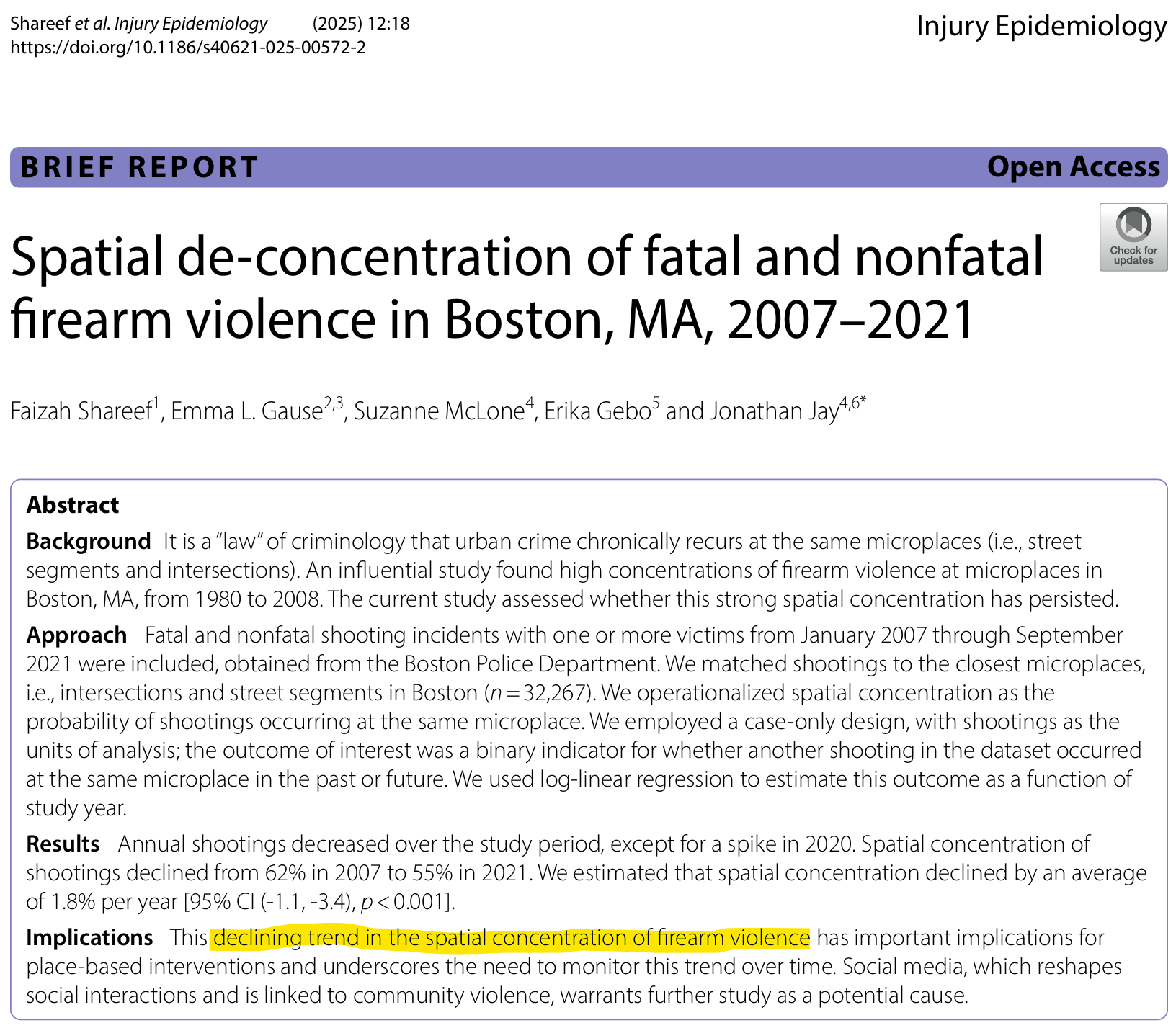
Social change and the life course
Classic concerns of demography and life course research… mostly